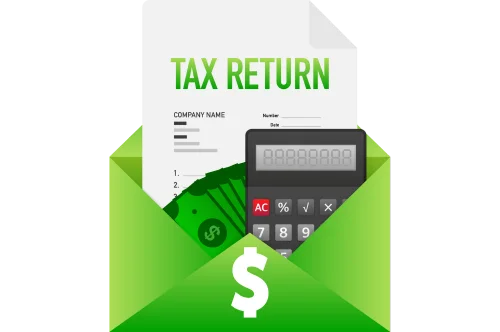Tax Basics can feel overwhelming, especially if you’re new to tax filing. However, understanding the fundamentals and common tax basics terms can simplify the process and help you approach tax season with confidence. In this guide, we’ll break down key tax basics terms, essential tax basics filing tips, and strategies to make the tax basics process as straightforward as possible.
1. What is Income Tax?
Income tax is a tax levied by governments on an individual’s or business’s income. Governments use this revenue to fund essential public services, infrastructure, defense, and other programs. In India, the Income Tax Department is responsible for collecting and enforcing taxes on income.
Every financial year, individuals and businesses calculate their taxable income, apply any tax deductions, and pay taxes accordingly. Depending on income levels and categories, like salaried individuals, self-employed professionals, and companies, different tax basics filing requirements and slabs apply.
2. Understanding Key Tax Basics Terms
Familiarizing yourself with essential tax basics terminology can make the filing process easier:
Financial Year (FY): This is the year in which you earn income, running from April 1 to March 31. For instance, FY 2023-24 covers income earned between April 1, 2023, and March 31, 2024.
Assessment Year (AY): The year following the Financial Year, in which income is assessed and tax basics returns are filed. For income earned in FY 2023-24, the AY would be 2024-25.
Tax Deducted at Source (TDS): TDS is a system where tax is deducted at the time of income payment, like salary or interest. It helps ensure a steady flow of tax basics revenue and reduces the risk of evasion. You can view your TDS details in Form 26AS on the Income Tax portal.
Exemption vs. Deduction: Exemptions refer to income that is not taxed, such as agricultural income. Deductions reduce your taxable income, and popular tax basics deductions include those under Section 80C (investments like PF, PPF, and LIC).
Tax Refund: When you’ve paid more tax than you owe, you can file a claim to receive the extra amount as a refund.
Tax Slabs: India follows a progressive tax structure, where tax rates vary based on income slabs. Lower income levels are taxed at lower rates, while higher incomes are taxed at higher rates.
3. Structure of Income Tax in India
Income tax basics in India are divided into different categories based on income sources:
Income from Salary: For salaried individuals, employers provide a Form 16, detailing income, deductions, and TDS. This includes basic pay, allowances, and other benefits.
Income from House Property: Rental property income falls under this category, with deductions available on mortgage interest and property-related expenses.
Income from Business or Profession: If you’re self-employed or own a business, profits from these activities are taxable here.
Income from Capital Gains: This includes gains from the sale of assets, like stocks or property. These gains are classified as short-term or long-term based on holding period.
Income from Other Sources: This category covers earnings from interest on savings accounts, dividends, lottery winnings, etc.
4. Basic Tax Basics Filing Process
Filing your taxes can be done via the Income Tax Department’s e-filing portal. Here’s a step-by-step tax basics guide:
Gather Documents: Collect essential documents such as Form 16, Form 26AS, investment proofs, and bank statements.
Choose the Correct ITR Form: Select the correct Income Tax Return (ITR) form. For instance, ITR-1 (Sahaj) is for salaried individuals, while ITR-3 is for business income.
Login to the e-Filing Portal: Register or log in to the official Income Tax Department e-filing portal.
Fill in Income and Deductions: Fill out the ITR form, including income details and deductions under sections like 80C, 80D, etc.
Review TDS and Tax Payments: Check TDS details in Form 26AS to confirm accuracy.
Submit and E-Verify: After submission, complete the e-verification process to finalize.
Wait for Processing and Refund: Once your ITR is processed, applicable refunds will be credited to your bank account.
5. Deductions and Exemptions You Should Know
Understanding available tax basics deductions can help reduce your taxable income:
Section 80C: Allows deductions of up to ₹1.5 lakh for investments in PPF, EPF, life insurance, ELSS, NSC, and home loan principal repayment.
Section 80D: Deducts health insurance premiums for self, family, and parents.
Section 80G: Contributions to eligible charities qualify here.
House Rent Allowance (HRA): Salaried individuals can claim HRA if living in a rented home, reducing taxable salary.
6. Top Tips for Filing Taxes as a Beginner
Start Early: Starting early helps prevent errors, ensures thorough document review, and reduces the chance of missing tax basics deductions.
Verify Form 26AS and AIS: Ensure your TDS, tax payments, and income details are accurate to avoid discrepancies.
Claim Eligible Deductions: Use deductions under Section 80C, 80D, etc., to reduce taxable income.
Double-Check Personal Details: Errors in PAN, Aadhaar, or bank details can delay refunds.
Choose the Right ITR Form: Filing with the correct form avoids rejection.
Keep Proof of Investments: Maintain all tax basics records for audits.
E-Verify Promptly: Complete e-verification after filing to finalize the return.
Save Your Acknowledgment Receipt: This serves as proof of filing for future reference.
7. Common Tax Filing Mistakes to Avoid
Missing the Deadline: Penalties may apply for late filing. The usual deadline is July 31st unless extended.
Not Disclosing All Income: All income sources must be disclosed to avoid penalties.
Incorrect Bank Details: Refunds rely on accurate bank details.
Overlooking Deductions and Exemptions: Missing out on deductions can increase tax basics liability.
8. What to Do After Filing Your Tax Return
Check Processing Status: Track your ITR status on the e-filing portal.
Handle Refunds and Adjustments: Refunds will be credited after processing, with notification sent.
Address Notices Promptly: Respond to Income Tax Department notices as needed.
Conclusion
While tax basics may seem challenging, understanding key tax basics terms, the income tax basics structure, and filing procedures can make it manageable. Familiarize yourself with income sources, utilize deductions, and stay organized with documents for a smooth filing experience. By following these tax basics filing tips and being mindful of details, you can confidently manage tax season and fulfill your obligations effectively.
Our Tax Services

ITR Filing
ITR Filing services provide full assistance with Income Tax Return submissions, ensuring accurate and timely compliance with all tax regulations and statutory requirements for both individuals and businesses.

Tax Audit
A tax audit reviews financial records to ensure compliance with tax laws, verifying income, deductions, and expenses. It minimizes errors and helps businesses avoid penalties, ensuring accurate tax reporting.

Company Audit
A company audit is an independent check of financial statements, confirming accuracy and regulatory compliance. It enhances transparency, boosts trust, and identifies potential issues in a company’s finances.





